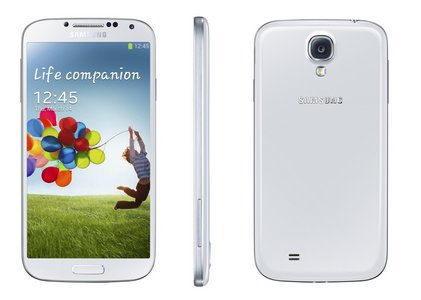I recently got this question from a site visitor and thought it’s probably something a lot of site visitors are wondering, so here goes.
Neo is just as much The One in SD as he is in HD.

High Definition (HD) vs. Standard Definition (SD)
In a nutshell, the difference between high definition and standard definition images is the number of pixels contained in the image on display. HD images have more pixels per square inch than standard definition videos. Okay fine, but what does that really mean?
It means that HD images can show much finer detail than SD images. Here’s a simple analogy that should explain why.
Imagine you have a 3×5″ card, and you’ve been asked to draw a picture of a flower on it. You’re given your choice of two drawing tools: either a preschooler-type crayon (the really big ones) or a finely sharpened pencil. If you choose the crayon, your picture can’t possibly include as much detail as you could provide with the pencil drawing, because the crayon draws a much thicker line and you’re limited to the size of a 3×5″ card. And that’s just like the difference between SD and HD: the HD image shows finer detail because it “draws” the image with smaller, and more, pixels than an SD image can.
But not so fast! This is a very simplified example, intended to clarify the concept of HD vs. SD. In real life, the differences can be much more subtle. In real life, the upgrade to HD quality won’t be noticeable to most of us most of the time.
Have you seen these people in HD? Are you sure you really want to?

Videophiles: Move Along, There’s Nothing For You To See Here
Let me say right up front that video fanatics, the type of people who were all over Laserdiscs back in the day and have a home theater setup with equipment that looks like it belongs in a lab at NASA, are yelling at me through their screens right now that not only is the higher quality of an HD image noticeable, it’s critical to one’s enjoyment of any film.
To people like them, sure. The difference is noticeable. There are some people who would never go back to “consumer-grade” speakers after using super-expensive audio professional grade speakers, either. But I’m not one of them, and neither are most of you. This post is for the rest of us, the ordinary joes and janes who just want to watch our TV shows and movies in peace, with images that look clear to us.
And let’s face it, for anyone over the age of 40 who’s already had to start using reading glasses as it is, there’s an upper limit to how much clarity we can expect, even when viewing the real world around us!
So with that said, onward.
HD vs. SD: HD Is Wasted On An SD Screen
This pixels-per-square-inch thing comes into play on the device side, too. Even if you have an image that’s super high-def, 1080p, a device that can only display 720 pixels per square inch isn’t capable of displaying all that extra fine detail.
So if the device you plan to use for watching digital videos doesn’t have an HD display (you can check this in the device’s product details either in the user guide that came with it or on the manufacturer’s website), there’s no point in paying extra to watch HD videos on it.
How much fine detail are you getting on a 3.5″ screen, anyway?

HD vs. SD: HD Is Wasted On A Small Screen
You probably already know that when you’re shopping for digital cameras, the higher the “megapixel” setting, the better the quality of your digital photos will be. That’s because the higher the pixel count, the more pixels there are per square inch. The more pixels there are per square inch, the higher the resolution. The higher the resolution, the finer the detail on your pictures will be. But the extra pixels in a high-def image aren’t distinguishable by the human eye when the image is small.
You know how sometimes when you’re online, you’ll see a small (or “thumbnail”) version of an image that looks pretty clear, and when you click on it to load the full-size image, the enlarged image looks fuzzy? That usually happens when the image was saved at a low resolution setting. The image looks fine to your eyes when it’s small but the bigger it gets, the worse it looks.
So if you’re intending to view digital video on a small screen, not only will you NOT notice the loss of finer details in a standard definition video, you also won’t notice the increase in finer details in an HD video.
But How Small Is The “Small” When I Say “Small Screen”?
I’ve watched both the SD and HD versions of The Matrix and Constantine, two movies with a lot of digital special effects, on my Kindle Fire HD’s 7″ screen, and didn’t notice any difference whatsoever for either movie.
I repeated the experiment on my 37″ diagonal HD television set, and again, did not notice any significant difference. I think this is because even though the image is a lot larger on my TV, I’m still sitting at least 12 feet away from the screen when I’m watching it. I don’t have a huge living room, this distance is mostly because the TV is mounted on the wall. The further I get from any image, whether on TV, my computer, my phone, my Kindle Fire or even in real life, the less I’m going to notice fine detail.
In my opinion, the difference between SD and HD is most noticeable on broadcast, network TV. But when I’m watching the news, a sitcom or a panel discussion show, I’m focused much more on what the people are saying than whether or not I can count the freckles on their noses.
Admit it: if we’d never heard of Blu-ray or HD, we’d have been perfectly content to keep watching DVDs and we would still be impressed by their image quality.

Don’t Forget How Amazing We All Thought DVD Resolution Was When DVDs First Became A Thing
If you’re old enough to have owned a movie on VHS (or even—GASP!—Betamax) and then replaced it with a new copy on DVD, surely you remember being awe-struck by the tremendous increase in image clarity. At the time you might even have said something like, “It’s like I’m right there, IN the movie! It’s like I’m actually IN The Field of Dreams!” Well guess what? That image was in standard def.
DVD image quality is nothing to sneeze at, and until people who sell HD devices and videos starting publicizing this notion that DVD image quality doesn’t cut the mustard, we were all just fine with it.
HD Isn’t Doing The Actors Or The Audience Any Favors
Until the advent of HD TV, I was happy to believe that Johnny Depp’s face was as smooth and flawless as a piece of Limoges porcelain. I was not happy when that bubble was burst wide open the first time I saw him in an interview segment on my HD TV.
Every celebrity and public figure, no matter how beautiful or handsome, is imperfect. And HD is great at literally bringing all those tiny imperfections into sharp focus. It’s not for nothing that some TV shows are being shot in slightly soft focus now, or that more celebrities seem to be getting facelifts and collagen injections than ever before.
In Conclusion…
Since HD digital movies run anywhere from $2 – $5 higher than their SD counterparts, and HD digital TV shows can be as much as $20 higher per season than the SD versions, the choice between HD and SD really can have a significant impact on your budget.
For all the reasons above, for most of us, it’s not worth the extra spend.
Also See:
Managing Your Amazon Instant Video Library
Amazon Instant Video Restrictions
Amazon Instant Video Myths & Facts
When And How To Stop Sharing A Family Account For Your Digital Content
Watch With The D-Media Mom: Sgt. Pepper’s Lonely Hearts Club Band
* * *
The Anker® 2nd Gen Astro Mini 3200mAh Lipstick-Sized Portable Charger External Battery Power Bank is handy to have on hand for those times when your cell phone or tablet battery’s about to die and there isn’t an outlet in sight. It has an average review rating of 4.5/5 stars across over 23,800 reviews and normally sells for $39.99, but right now it’s available for just $12.99.

Advertisements make it possible for Digital Media Mom to bring you great content for free, so thanks for your support.